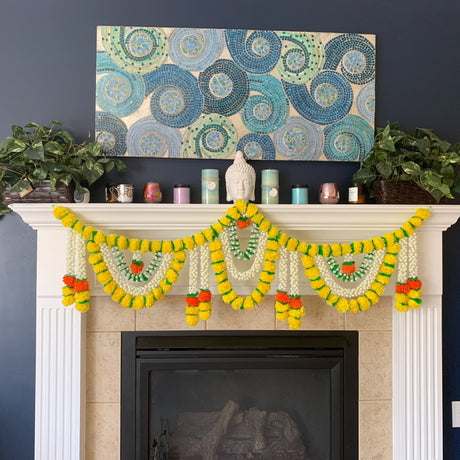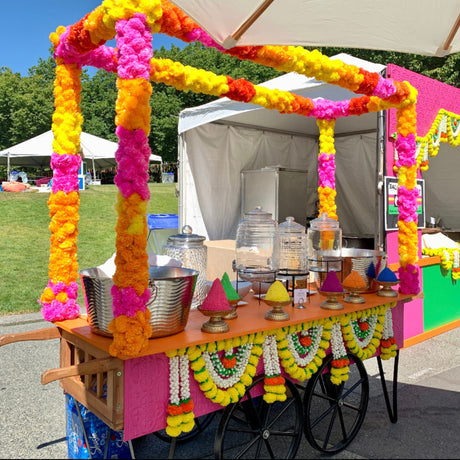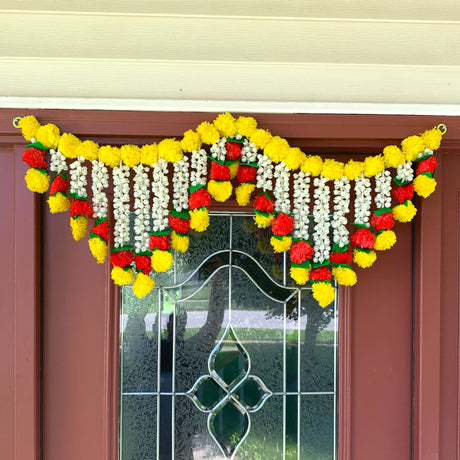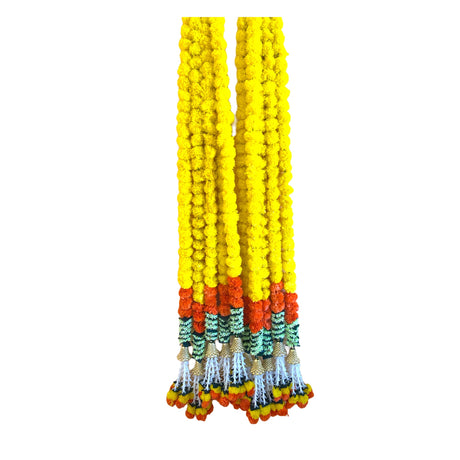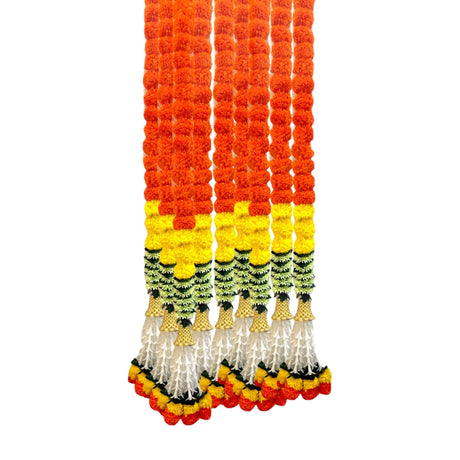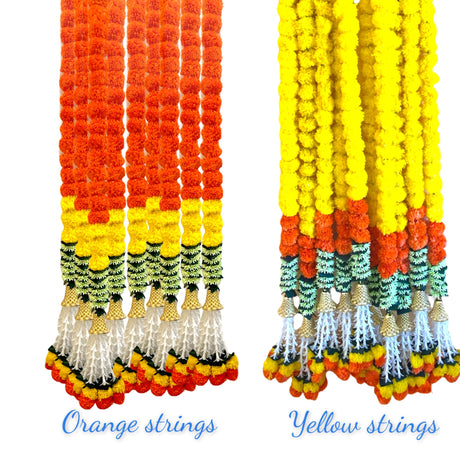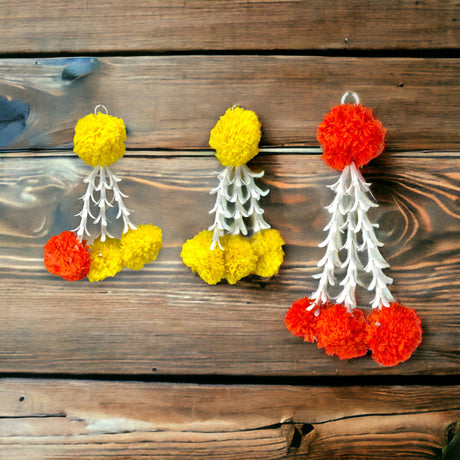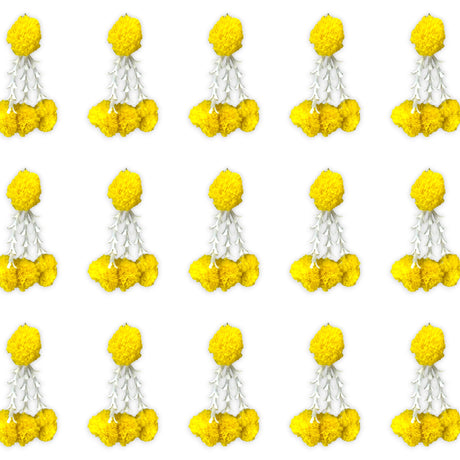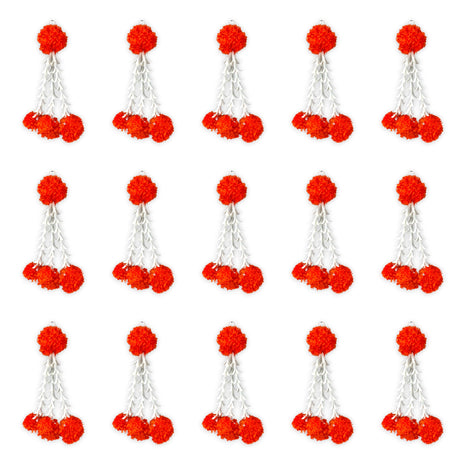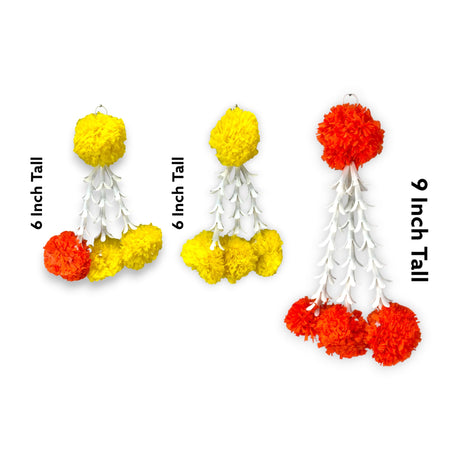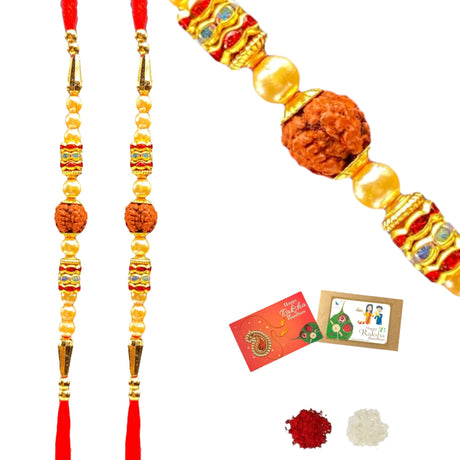Dussehra, also known as Vijayadashami, is a vibrant Hindu festival that celebrates the timeless victory of good over evil. It has deep roots in Hindu mythology and commemorates two significant events:
- The triumph of Goddess Durga over the buffalo demon Mahishasura
- Lord Rama's conquest against the demon king Ravana, as narrated in the Ramayana
This festival marks the end of Navaratri, a nine-night celebration dedicated to the goddess. During Dussehra, families perform Dasara puja at home, seeking blessings for health and prosperity. To make this occasion even more special, one can explore our Dussehra collection for unique items to incorporate into their celebrations.
Why Understanding Dasara's Significance Matters Today
In today's world, understanding the significance of Dasara holds great importance. As society grapples with moral dilemmas, these ancient stories serve as reminders of the value of righteousness and virtue. The festival acts as a cultural bridge, bringing together diverse communities and reinforcing common principles.
Celebrating Dussehra goes beyond honoring traditions; it also encourages introspection on individual and societal duties. In an era of rapid change, embracing the teachings from this festival can motivate people to establish meaningful environments where goodness prevails.
Honoring Lord Rama's Legacy
The festival also provides an opportunity to celebrate Lord Rama's legacy. For those who wish to pay homage to him further, purchasing Jai Shri Ram paper badges or a Jai Shri Ram banner can add a special touch to your celebrations. Additionally, a model of the revered Ram Mandir could serve as a meaningful decor item for your home temple during this festive period.
1. Historical Background of Dussehra
Dussehra, an important festival in Hinduism, has its roots in ancient mythology as told in the Ramayana and Mahabharata. The festival celebrates significant victories that represent the ongoing battle between good and evil.
Lord Rama's Triumph
At the heart of the festival is Lord Rama's fight against Ravana, the demon king who kidnapped his wife, Sita. This epic showdown symbolizes the triumph of righteousness over oppression. During this time, many people worship the Ram Darbar, an idol depicting Lord Rama with his family.
Goddess Durga's Conquest
Equally important is the story of Goddess Durga, who defeated the buffalo demon Mahishasura. Her fierce determination embodies the empowerment of divine feminine energy.
These legends are more than just tales; they convey moral lessons and cultural values that still resonate with devotees today. Celebrating Dussehra gives individuals an opportunity to reflect on these timeless teachings while engaging in lively customs such as Dussehra puja and Dussehra pooja at home, strengthening community ties. Happy Dussehra!
2. The Dual Significance of Dussehra
Dussehra embodies the victory of good over evil, symbolized through two iconic narratives:

1. Goddess Durga's Triumph
Her fierce battle against the buffalo demon Mahishasura represents the relentless fight against ignorance and negativity. This victory signifies the empowerment of women and the importance of resilience in overcoming challenges.

2. Lord Rama's Conquest
The defeat of Ravana, a ten-headed demon king, illustrates the eternal struggle between righteousness and moral decay. Lord Rama’s adherence to dharma (duty) serves as a profound lesson on integrity and ethical conduct.
These stories impart essential moral lessons that resonate within contemporary society. They encourage individuals to uphold virtues such as courage, honesty, and justice while inspiring communities to unite against malevolence. The dual significance of Dussehra continues to inspire reflection on personal values, urging a commitment to righteousness in daily life.
3. Cultural Variations in Dussehra Celebrations Across India
Dussehra, celebrated across India, showcases diverse regional traditions that enrich its cultural tapestry. Key celebrations include:
1. Ramlila
In Northern India, particularly Uttar Pradesh, communities engage in vibrant Ramlila performances. These theatrical renditions depict the epic story of Lord Rama, culminating in the dramatic burning of effigies of Ravana, symbolizing the victory over evil.
2. Mysore Dasara
Karnataka embraces a grand celebration known as Mysore Dasara. This event features elaborate processions with decorated elephants, traditional music, and dance performances. The festivities honor Goddess Durga with immense grandeur and cultural displays.
These regional celebrations highlight the unique ways communities interpret the essence of Dussehra while fostering a sense of unity and shared cultural heritage. Each variation reflects local customs and collective storytelling, deepening the significance of this auspicious festival.
4. Rituals and Customs Associated with Dussehra
Dussehra is rich in rituals and customs that embody the spirit of community and devotion. Key practices include:
1. Dasara Puja Rituals
Families set up elaborate altars adorned with images of deities, particularly Goddess Durga. Daily prayers and offerings are made, invoking blessings for prosperity and health.
2. Community Gatherings
These gatherings cultivate a sense of unity. Villagers come together to celebrate through communal feasts, where traditional dishes are shared, strengthening bonds among neighbors.

3. Apta Leaf Exchange
One of the unique customs during Dussehra is the exchange of Apta leaves, which represents goodwill and prosperity. This tradition not only strengthens relationships but also embodies the spirit of the festival by promoting the idea of spreading happiness.
These rituals go beyond just symbolizing the victory of good over evil; they actively work towards uniting communities and fostering meaningful connections that extend beyond the festival itself. Dussehra becomes a beautiful blend of shared values and communal celebration, as people come together to honor their beliefs and find joy in each other's company.
5. The Symbolism Behind Dussehra Celebrations and Its Connection to Diwali
Dussehra embodies rich symbolism, particularly through the tradition of burning effigies of Ravana. This act serves as a powerful representation of the triumph of good over evil. The flames symbolize the destruction of negative forces and the purification of spirit, marking a moment of reflection on personal virtues and ethical conduct.
The Connection Between Dussehra and Diwali
As Dussehra culminates, it paves the way for Diwali, often referred to as the festival of lights. This connection is profound, emphasizing themes of renewal and hope. While Dussehra celebrates the defeat of darkness through destruction, Diwali illuminates life with joy and positivity following that victory.
The Journey from Conflict to Harmony
The transition from one festival to another encapsulates a journey from conflict to harmony, encouraging individuals to embrace goodness in their lives. Through these celebrations, communities come together to honor shared values and cultural heritage, leading them toward a brighter future.
Enhancing the Festive Spirit with Decorations
To enhance the festive spirit during these occasions, decorations play a vital role. Flowers like jasmine, orange marigold, mogra, and yellow marigold are commonly used for Diwali decoration as well as Dussehra decor. These floral decorations not only beautify homes but also symbolize prosperity and happiness in the upcoming year.
6. The Role of Dussehra in Promoting Moral Values and Community Unity
Dussehra represents the core values of honesty and togetherness within a community. This festival serves as a powerful reminder for individuals to always choose what is right in their everyday lives. The stories of Goddess Durga and Lord Rama motivate us to seek justice, be brave, and act virtuously.
Key aspects include:
- Coming Together Against Evil: Communities join forces in celebration, showing their shared determination to fight against negative forces.
- Learning from the Past: Stories from the Ramayana and Mahabharata teach us the significance of standing up against wrongdoing, encouraging personal introspection on moral behavior.
- Celebrating Diversity: Different customs across regions unite during Dussehra, demonstrating the strength of harmony among communities.
Participating in these timeless traditions strengthens relationships, enriching our society while fostering a feeling of belonging. Dussehra is more than just a festival; it reinforces values that resonate within every heart, motivating collective efforts towards creating a fair society.
7. The Festive Calendar: Linking Dussehra with Other Festivals Like Navaratri and Diwali
Dussehra, celebrated on the tenth day after the nine nights of Navaratri, represents a journey from worship to victory.
1. Navaratri Festival
This nine-night festival honors Goddess Durga, symbolizing the battle against darkness and ignorance. Each night is dedicated to different forms of the goddess, fostering spiritual growth and community engagement.
2. Transition to Dussehra
The end of Navaratri leads directly into Dussehra, marking a significant change in the festive calendar. This transition signifies not only the end of a period of reflection but also the celebration of triumph over evil.
3. Connection to Diwali
Following Dussehra, Diwali emerges as another important festival approximately 20 days later. Both celebrations share themes of renewal, light conquering darkness, and the moral victories that resonate throughout these festivities.
The cyclical nature of these festivals reinforces cultural values and traditions, allowing communities to unite in their shared heritage.
8. Preserving the Cultural Roots of Dasara for Future Generations: A Call to Action!
The cultural roots of Dasara are extremely important in today's ever-changing world. It is essential to ensure that the rich heritage associated with this festival is preserved and passed down to future generations. Here are some ways we can do this:
1. Storytelling
Sharing the stories of Goddess Durga and Lord Rama helps us understand their victories over evil better. By telling children tales of bravery and doing the right thing, we instill pride in their heritage.
2. Community Involvement
Encourage local communities to take an active part in Dasara celebrations. Organizing events that include traditional performances, feasting, and rituals strengthens community bonds while honoring cultural practices.
3. Educational Initiatives
Schools and cultural organizations can include lessons on Dasara in their teaching programs. Workshops, art projects, and discussions can inspire young minds to appreciate their cultural identity.
4. Sustainable Practices
Use environmentally friendly methods during celebrations to protect the environment while respecting tradition. This approach aligns with modern values while keeping the spirit of Dasara alive.
Preserving the cultural roots of Dasara ensures that its messages of good overcoming evil continue to resonate, making a lasting impact on society. Engaging in these activities not only deepens personal connections but also creates a feeling of belonging within the larger fabric of Indian culture.
Conclusion
Dasara is a powerful reminder of the importance of doing what is right and the victory of good over evil. The various historical stories and lively celebrations throughout India highlight its cultural importance and ability to bring people together.
By participating in rituals, sharing stories, and adopting eco-friendly practices, we pay tribute to influential figures such as Goddess Durga and Lord Rama while promoting unity and continuity within our diverse cultural heritage.
To ensure that Dasara's messages remain relevant and inspiring for future generations, it is crucial to preserve these traditions through active community participation and educational programs.




















